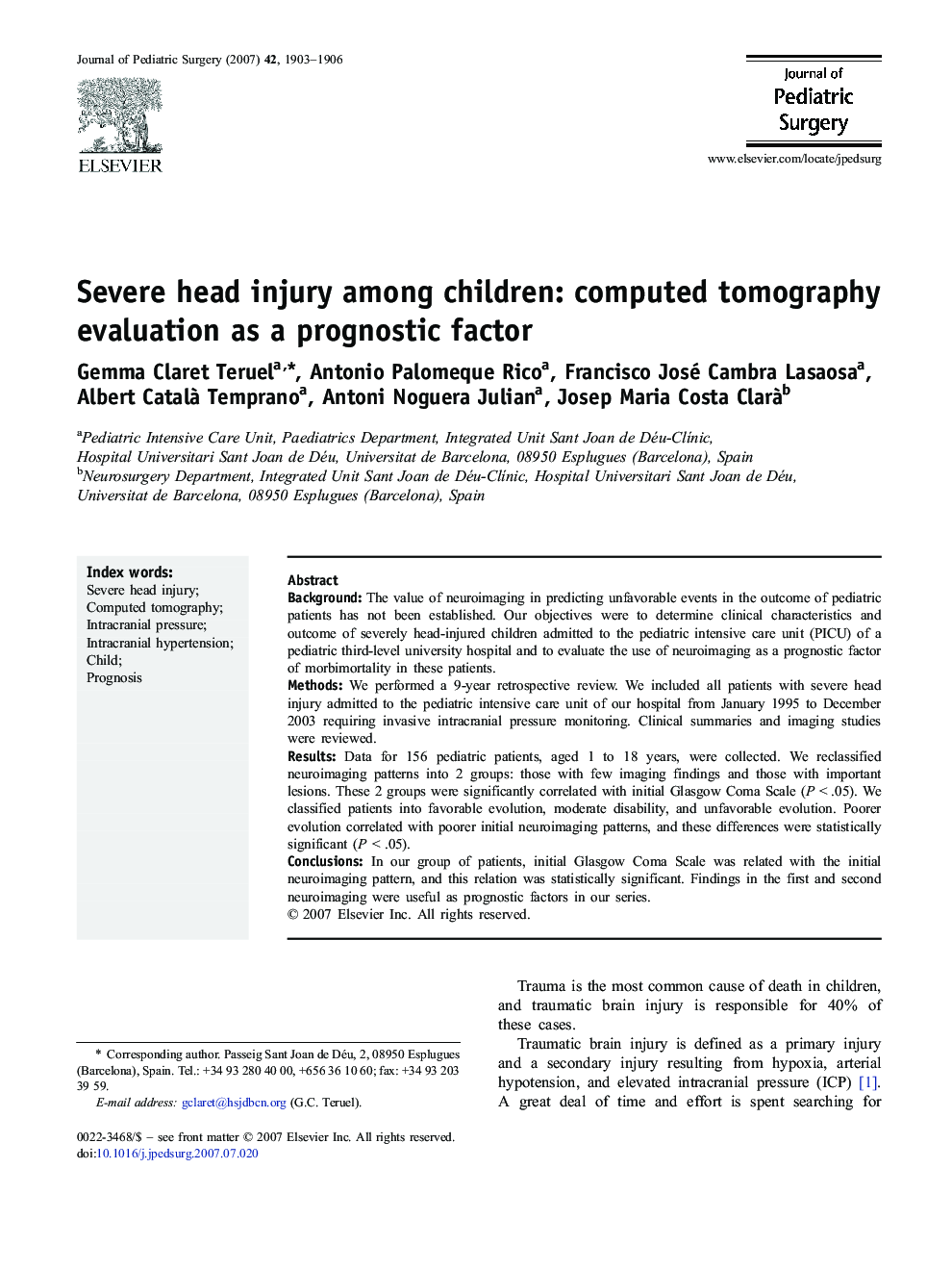| Article ID | Journal | Published Year | Pages | File Type |
|---|---|---|---|---|
| 4160056 | Journal of Pediatric Surgery | 2007 | 4 Pages |
BackgroundThe value of neuroimaging in predicting unfavorable events in the outcome of pediatric patients has not been established. Our objectives were to determine clinical characteristics and outcome of severely head-injured children admitted to the pediatric intensive care unit (PICU) of a pediatric third-level university hospital and to evaluate the use of neuroimaging as a prognostic factor of morbimortality in these patients.MethodsWe performed a 9-year retrospective review. We included all patients with severe head injury admitted to the pediatric intensive care unit of our hospital from January 1995 to December 2003 requiring invasive intracranial pressure monitoring. Clinical summaries and imaging studies were reviewed.ResultsData for 156 pediatric patients, aged 1 to 18 years, were collected. We reclassified neuroimaging patterns into 2 groups: those with few imaging findings and those with important lesions. These 2 groups were significantly correlated with initial Glasgow Coma Scale (P < .05). We classified patients into favorable evolution, moderate disability, and unfavorable evolution. Poorer evolution correlated with poorer initial neuroimaging patterns, and these differences were statistically significant (P < .05).ConclusionsIn our group of patients, initial Glasgow Coma Scale was related with the initial neuroimaging pattern, and this relation was statistically significant. Findings in the first and second neuroimaging were useful as prognostic factors in our series.
